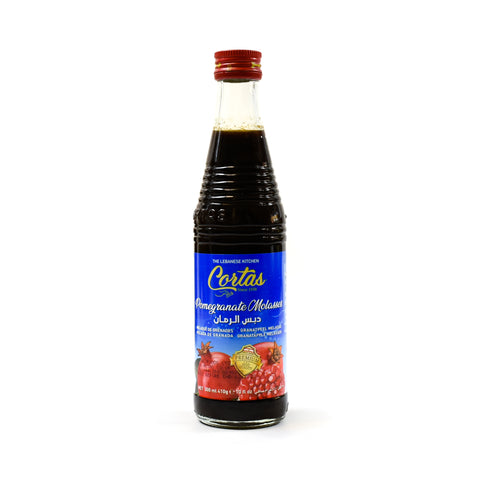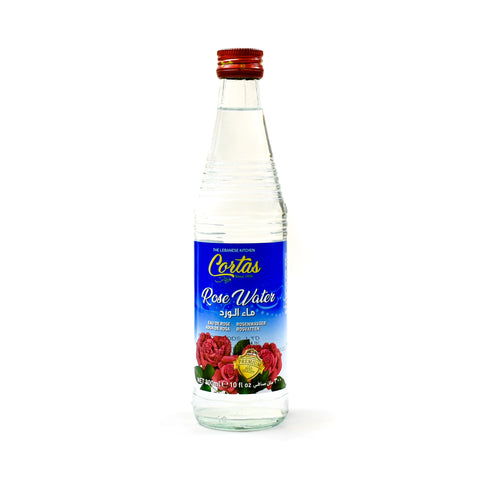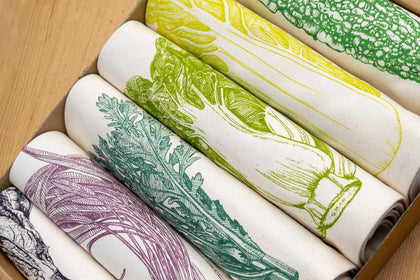Ultimate Guide To Persian Food And Recipes With Sabrina Ghayour
by Sabrina Ghayour

Sabrina Ghayour is a British-Iranian chef and food writer. As well as hosting regular pop-ups and supper clubs, she teaches Persian cooking across the UK.
Here, she tells Sous Chef about the key flavours in the Iranian cuisine, the must-have ingredients, and why tahdig takes practise to get it perfect.
What are the key flavours in Persian food?
When we broadly speak about Middle Eastern cooking, Persians don't really include themselves in that group. Geographically, we technically are part of it, but Iran is the one country that really rebuffs what we know about Middle Eastern food. This is because culturally, we are very different to the rest of the Arab Middle East.
When we sum up Middle Eastern cooking we think spices, and that’s the complete opposite of Persian food. Persians don’t use spices at all apart from saffron, which we cultivate, and still then only use it in one or two dishes.
The Persian cuisine is all about aroma, perfume and elegance, but really, its flavour can be summed up in three words: citrus, herbs and tomato. The sour, citrus-type flavours are achieved through the use of barberries, sumac and lemon.
What are the key ingredients in Persian food?
To achieve the classic Persian flavours and dishes, there are a few key ingredients to have in your store cupboard.
Dried limes
Dried limes add complex, citrus flavours to Persian stews.
Barberries
Dried barberries have many uses in Persian recipes. They can be stirred through rice or added to salads. The taste is very sour.
Sumac
Sumac brings a lemony tang to Persian dishes, whether that’s sprinkling it on salads, using to season aubergine-based side dishes or stirred through rice.
Pomegranate molasses
Pomegranate molasses has a fruity sweetness that's countered by a sharp tart flavour. The treacle-like syrup can be used to make a vinaigrette, or drizzled over roasted aubergine.
Basmati rice
Basmati rice is hugely important, and the higher the quality the better. It is the staple of Persian cuisine and is at the centre of every meal.
Pistachio slivers
Pistachio slivers are commonly used in rice dishes and sweets. In Iran, we would never use pistachios with their skin on because they are not the nuts we produce, and we’re very proud of the hand-cut, pistachios we do make. It’s an artisan craft to create them.
Rose water
In Iran, the rose water isn’t made with alcohol as we’re a Muslim country, so that’s an important thing to look out for. You want to make sure the rose water is delicate and very aromatic. The measurements for rose water in my recipes are intended for the really pure, floral rose waters.
Dried fruit and nuts
The use of dried fruit and nuts originated in Persia, and has influenced the tagines of North Africa, and biryanis of India. Using dried fruits adds sweet flavouring and is frequently used to jewel rice or added to stews.
What are the most popular dishes in the Persian cuisine?
Rice-based dishes
Rice-based dishes are very important! We have dozens of different Persian recipes for rice, but essentially what makes our rice so loved is the fact that we don’t cook by water absorption.
- We parboil the rice, then drain it off and steam, much as you would dim sum.
- Once the rice has been drained you want to dry it really well.
- Then place the parboiled grains back into a pan with butter at the bottom.
- Wrap a cloth around the lid really tightly so that it steams, and then flip it over to reveal a crisp crust!

Tahdig is the name of the rice dish with the scorched crust, and I can’t explain how to make it in just a few sentences. There are so many different factors that affect the end result, from the heat source you use, to the pan.
Practise, practise, practise is the one piece of advice I can give when making tahdig. In my books, I have a couple of recipes which are a good starting point. Some people might make it perfectly the first time, and for others it can take years, but as soon as you move house or buy a new pan, it can turn out completely different!
Kebabs
We are the founders of kebabs. Every culture has their own version of kebabs, but we have three classics:
- Flat minced kebab, typically made from ground beef or lamb and mixed with onions, and shaped on wide skewers.
- Fillet kebab, where the meat is beaten and flattened super thin.
- Chunks of fillet kebab. When chicken is used, it’s named joojeh, and the chicken is traditionally marinated in yogurt and lemon juice to tenderise it.
I think the Turks have the most variety of kebabs, however we’re the ones responsible for creating them in the first place.
Stews
For every curry India has, Iran has a stew. For every fruit or vegetable that grows, from rhubarb to celery to plums to apricots, you name it, we have it. Stews are what you’d consider to be home cooking in Iran.
What about desserts in Iran?
Desserts are not a thing in Iran, but sweets are. When you come to my house, there will never be fewer than six or seven dishes on the table. It’s not just a Persian thing, but a way of life in Greece and Turkey, too. The focus is on being super hospitable, and if you have room for dessert, then we’ve failed!
After the savoury dishes, fresh fruit, biscuits and tea is served. The tea is to help digestion. We do have a few sweet bites including baklava, doughnut fritters - heavily soaked syrup sweets but always small bites.
When it comes to tea, we only drink it black in Iran. Gunpowder is very popular, and it’ll be brewed constantly throughout the day, from morning to night. It’s typically served with lumps of sugar on the side, and you’re meant to put a sugar cube in your mouth as you sip the tea to sweeten it.
The main thing to remember about the Persian culture and people is that we’re very gentle, hospitable and love to party. Whether you’re best friends or a complete stranger, you will always be welcomed and fed a feast.
Shop the article here:

About the author
Sabrina Ghayour is a British-Iranian chef and food writer. As well as hosting regular pop-ups and supper clubs, she teaches Persian cooking across the UK.








